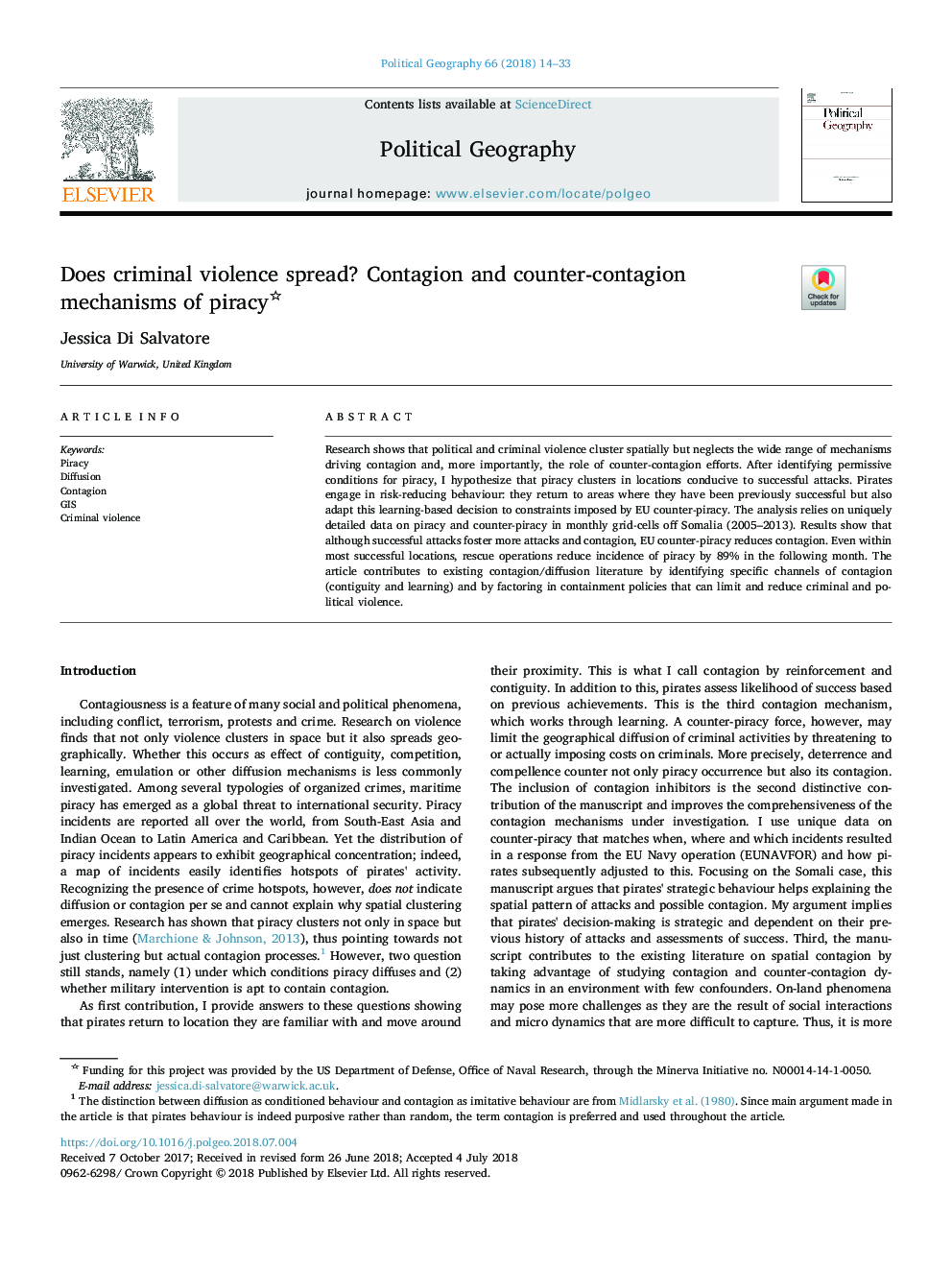| Article ID | Journal | Published Year | Pages | File Type |
|---|---|---|---|---|
| 7492459 | Political Geography | 2018 | 20 Pages |
Abstract
Research shows that political and criminal violence cluster spatially but neglects the wide range of mechanisms driving contagion and, more importantly, the role of counter-contagion efforts. After identifying permissive conditions for piracy, I hypothesize that piracy clusters in locations conducive to successful attacks. Pirates engage in risk-reducing behaviour: they return to areas where they have been previously successful but also adapt this learning-based decision to constraints imposed by EU counter-piracy. The analysis relies on uniquely detailed data on piracy and counter-piracy in monthly grid-cells off Somalia (2005-2013). Results show that although successful attacks foster more attacks and contagion, EU counter-piracy reduces contagion. Even within most successful locations, rescue operations reduce incidence of piracy by 89% in the following month. The article contributes to existing contagion/diffusion literature by identifying specific channels of contagion (contiguity and learning) and by factoring in containment policies that can limit and reduce criminal and political violence.
Related Topics
Social Sciences and Humanities
Arts and Humanities
History
Authors
Jessica Di Salvatore,
